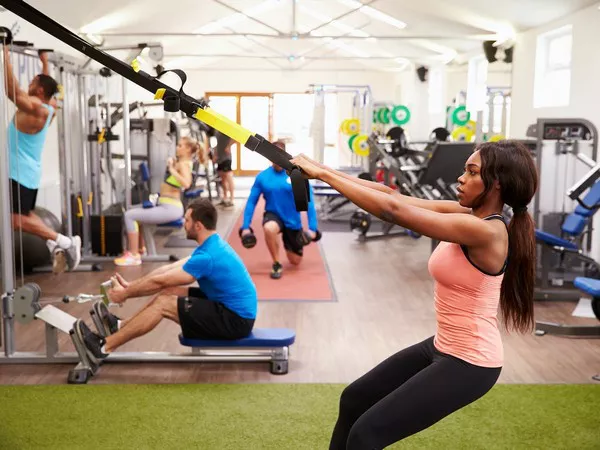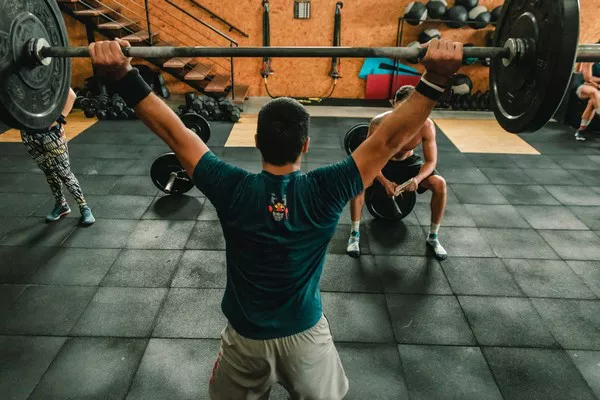Functional strength training has gained immense popularity in recent years due to its ability to enhance everyday movement patterns and improve overall athletic performance. Unlike traditional strength training that often focuses on isolated muscle groups, functional strength training emphasizes movements that mimic real-life activities, making it highly practical and efficient. In this article, we will delve into the best functional strength training program, its benefits, key principles, and how it relates to other fitness disciplines.
SEE ALSO: Full Body Strength Training: Methods & Benefits
Understanding Functional Strength Training
Functional strength training is a form of exercise that aims to improve the coordination, strength, and stability required for everyday activities and sports. It focuses on compound movements that engage multiple muscle groups simultaneously, rather than isolating individual muscles. By training the body to work as a cohesive unit, functional strength training helps prevent injuries, enhances performance, and improves overall functional fitness.
Benefits of Functional Strength Training
Several benefits of functional strength training are obvious:
1. Improved Functional Performance
The primary advantage of functional strength training is its direct transferability to daily activities and sports. Whether you’re lifting heavy objects at home or participating in competitive sports, the improved functional strength will make these tasks easier and safer.
2. Enhanced Core Strength
Functional exercises often engage the core muscles, including the abdominals, obliques, and lower back. Strengthening the core is vital for maintaining proper posture, stability, and reducing the risk of back pain.
3. Injury Prevention
By targeting multiple muscle groups and emphasizing proper movement patterns, functional training helps correct imbalances and reduces the risk of injuries caused by overuse or poor mechanics.
4. Increased Muscle Balance and Coordination
Functional movements require coordination between various muscle groups, promoting balance and proprioception (awareness of body position), which are crucial for overall body control.
5. Efficiency in Training
Functional workouts often combine strength training with cardiovascular exercises, saving time and delivering a comprehensive workout.
Key Principles of the Best Functional Strength Training Program
Before taking on a functional strength training program, some key principles should be followed:
1. Functional Movements: The program should prioritize compound movements that mimic real-life activities. Squats, deadlifts, lunges, and pushing/pulling exercises are staples of functional strength training.
2. Progressive Overload: To continue making gains, the program must gradually increase the intensity of exercises over time. This can be achieved through adding weight, increasing repetitions, or altering exercise variations.
3. Balanced Workout: An effective program should address all major muscle groups and movement patterns to create a balanced physique and functional fitness.
4. Core Emphasis: Core strength is fundamental in functional training. Exercises like planks, Russian twists, and wood chops should be incorporated to strengthen the core.
5. Functional Flexibility: Flexibility is essential for maintaining proper movement patterns. Including dynamic stretching and mobility exercises in the warm-up can improve functional flexibility.
6. Periodization: Periodizing the training program helps prevent plateaus and reduce the risk of overtraining. Structured phases of training, such as strength, power, and endurance, should be incorporated into the program.
7. Rest and Recovery: Adequate rest between workouts is essential for muscle recovery and overall progress. Integrating rest days into the training schedule allows the body to repair and grow stronger.
Functional Strength Training Programs for Beginners
For beginners, it is essential to start with functional strength training programs that focus on building a solid foundation of strength, stability, and proper movement mechanics. Here are some of the top functional strength training programs suitable for beginners:
1. Bodyweight Basics
This program primarily utilizes bodyweight exercises, making it accessible for beginners with little or no equipment.
Exercises include squats, lunges, push-ups, planks, and bodyweight rows.
It focuses on building foundational strength and improving overall body control.
2. Starting Strength
Created by Mark Rippetoe, Starting Strength is a popular program for beginners looking to develop foundational strength using barbell exercises.
It emphasizes compound movements like squats, deadlifts, bench presses, overhead presses, and power cleans.
The program incorporates linear progression, gradually increasing weight with each session.
3. StrongLifts 5×5:
Similar to Starting Strength, StrongLifts 5×5 is a straightforward and effective program for beginners.
It revolves around five compound exercises: squats, bench presses, barbell rows, overhead presses, and deadlifts.
The program involves three workouts per week, with five sets of five repetitions for each exercise.
4. Functional Circuit Training
Circuit training combines strength exercises with brief periods of cardiovascular activity, making it an efficient and engaging option for beginners.
This program incorporates functional exercises like bodyweight squats, lunges, push-ups, kettlebell swings, and medicine ball slams.
It helps improve strength, endurance, and overall functional fitness.
5. TRX Training
TRX suspension trainers utilize bodyweight exercises to improve strength, stability, and flexibility.
TRX exercises are scalable and suitable for all fitness levels, making it an excellent option for beginners.
The instability provided by the TRX system challenges the core and enhances overall functional strength.
6. Pilates for Beginners
Pilates focuses on core strength, flexibility, and body awareness, making it ideal for beginners seeking to improve functional strength.
Pilates exercises involve controlled movements that target the core, hips, and shoulders.
It is beneficial for improving posture, stability, and overall functional fitness.
7. Functional Yoga
Yoga offers a range of beginner-friendly poses and flows that can enhance functional strength, flexibility, and balance.
Yoga emphasizes bodyweight movements, stretching, and mindful breathing.
Incorporating yoga into a functional strength training routine can promote recovery and injury prevention.
Functional Strength Training Programs for Individuals Over 50 Years Old
For individuals over 50 years old, a functional strength training program that prioritizes safety, joint health, and functional fitness is recommended. As we age, maintaining strength, mobility, and overall functional capacity becomes increasingly important to support an active and independent lifestyle. Here are some key considerations and a recommended functional strength training program for individuals over 50:
1. Key Considerations for Functional Strength Training over 50
Joint Health: As we age, joint health becomes crucial. It’s essential to choose exercises that are gentle on the joints and avoid high-impact activities that may cause unnecessary stress.
Balance and Stability: Incorporate exercises that challenge balance and stability, as these become more critical with age to reduce the risk of falls and injuries.
Flexibility and Mobility: Focus on exercises that promote flexibility and mobility to maintain joint range of motion and reduce the risk of stiffness and discomfort.
Gradual Progression: Start with manageable intensity and progress gradually to avoid overexertion and potential injuries.
Full-Body Approach: A balanced program that targets different muscle groups and movement patterns will promote overall functional fitness.
2. Recommended Functional Strength Training Program for Individuals Over 50
Warm-up:
Gentle cardiovascular activity to increase blood flow and body temperature.
Dynamic stretching to improve mobility and flexibility.
Strength Training Exercises:
Bodyweight Squats: Strengthen lower body muscles and improve functional mobility.
Step-ups: Work on leg strength and balance.
Push-ups (knee or incline variations if needed): Strengthen chest, shoulders, and triceps.
Dumbbell Rows: Target upper back muscles and improve posture.
Glute Bridges: Strengthen glutes and lower back while promoting hip mobility.
Dumbbell Shoulder Press: Work on shoulder strength and stability.
Plank: Engage core muscles for stability and support.
Flexibility and Mobility Exercises:
Hip Flexor Stretch: Improve hip mobility.
Chest Opener Stretch: Open up the chest and shoulders.
Hamstring Stretch: Enhance hamstring flexibility.
Quadriceps Stretch: Stretch the front of the thighs.
Calf Stretch: Improve lower leg flexibility.
Cool-down:
Perform static stretches for major muscle groups to improve flexibility and aid recovery.
3. Frequency and Progression
Aim for 2 to 3 sessions per week, allowing at least one day of rest between sessions.
Start with 1 to 2 sets of 10 to 12 repetitions for each exercise and gradually increase the number of sets and repetitions as strength improves.
Use lighter weights and focus on proper form to reduce the risk of injury.
SEE ALSO: What are the Best Strength Training Exercises for Seniors?
Integrating Functional Strength Training with Other Fitness Disciplines
Functional Training and Cardiovascular Exercise: Combining functional strength training with cardiovascular exercises, such as running, cycling, or swimming, creates a well-rounded fitness regimen. This integration improves cardiovascular health while maintaining functional strength.
SEE ALSO: Can I Do Cardio After Strength Training? A Comprehensive Guide
Functional Training and Yoga/Pilates: Yoga and Pilates focus on flexibility, mobility, and core strength—attributes that align well with functional training. Integrating these practices helps improve overall body awareness and performance.
Functional Training and High-Intensity Interval Training (HIIT): HIIT involves short bursts of intense exercises followed by brief recovery periods. Integrating HIIT with functional training can elevate the workout’s intensity and boost metabolic rate.
Functional Training and Sports-Specific Training: For athletes, incorporating functional movements that mimic the actions in their respective sports can lead to enhanced performance and reduced injury risk.
Functional Training and Bodyweight Exercises: Bodyweight exercises, such as push-ups, pull-ups, and bodyweight squats, are integral to functional training. They can be performed anywhere, making them accessible and effective for developing functional strength.
Conclusion
Functional strength training is a versatile and effective approach to fitness that benefits people of all ages and fitness levels. By focusing on movements that translate to daily activities and sports, it enhances functional performance, promotes injury prevention, and improves overall physical capabilities. When designing the best functional strength training program, it is crucial to emphasize functional movements, incorporate progressive overload, and ensure a balanced workout. Integrating functional training with other fitness disciplines can further enhance the benefits and lead to a well-rounded fitness journey. Embrace functional strength training, and unlock your full potential for a healthier and more active lifestyle.
Remember, before starting any new fitness program, it is essential to consult with a qualified fitness professional or healthcare provider to ensure it aligns with your individual needs and goals.
[inline_related_posts title=”Related Topics” title_align=”left” style=”list” number=”3″ align=”none” ids=”1192,1144,1054″ by=”categories” orderby=”rand” order=”DESC” hide_thumb=”no” thumb_right=”no” views=”no” date=”yes” grid_columns=”1″ post_type=”” tax=””]


































